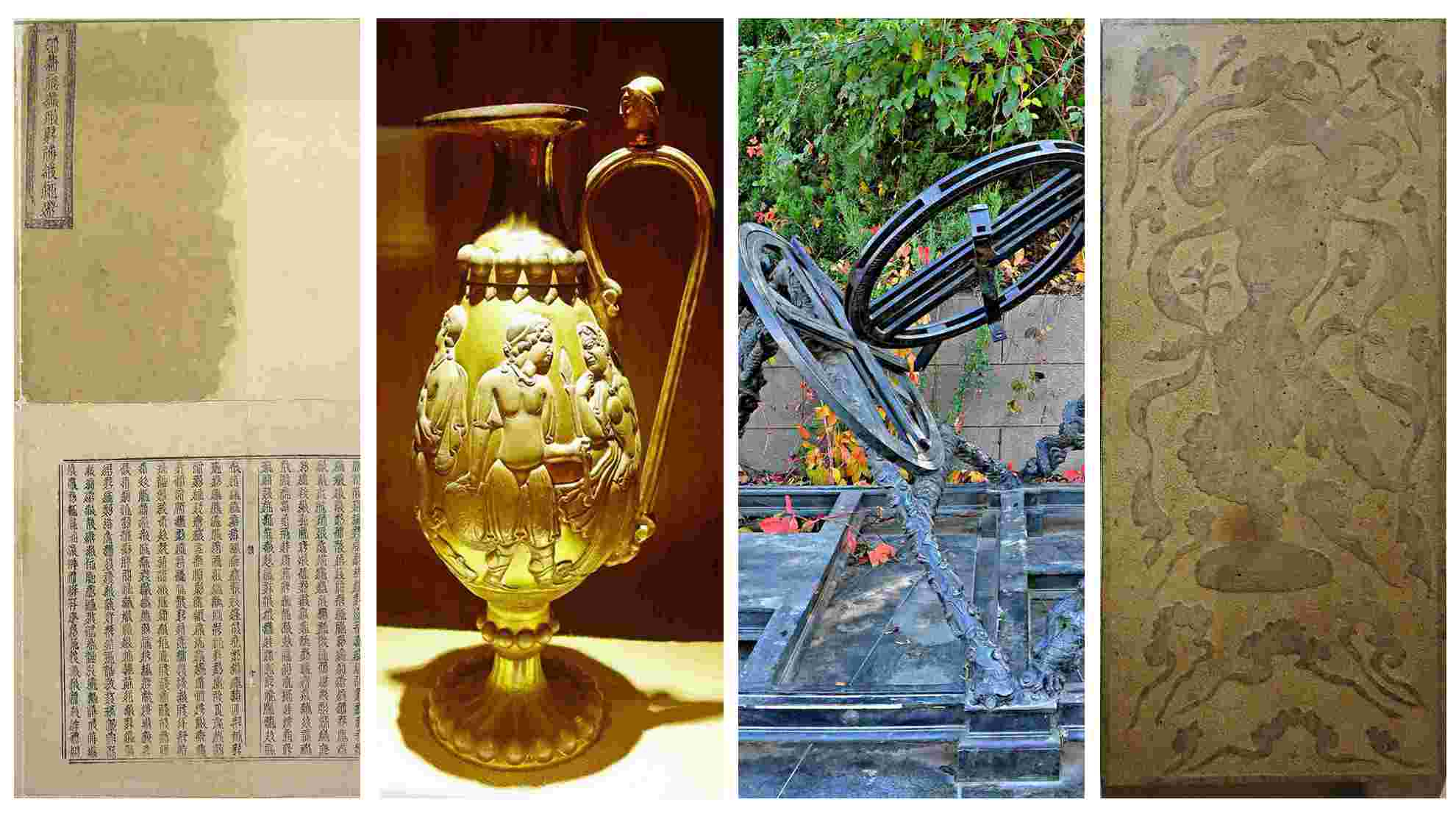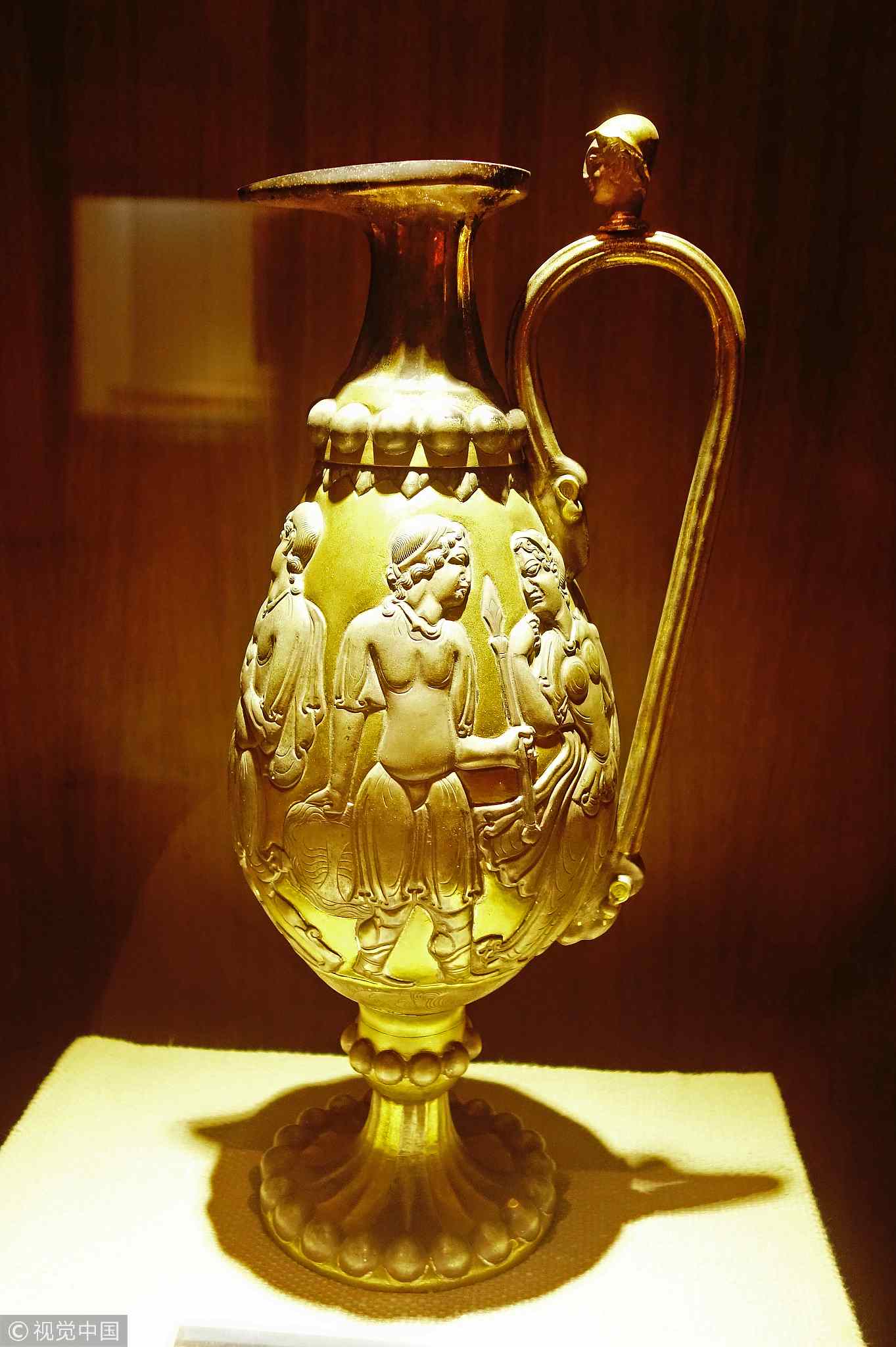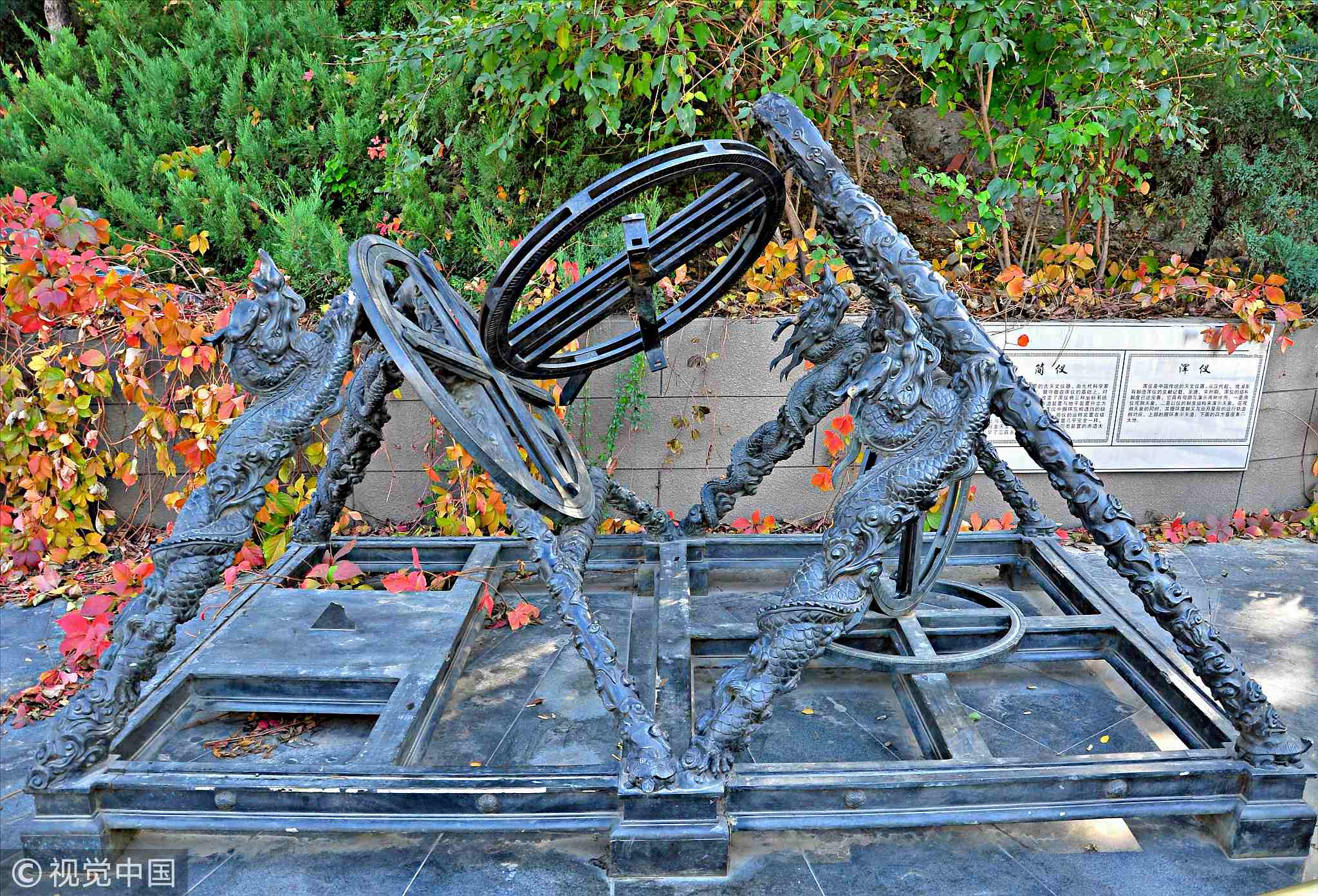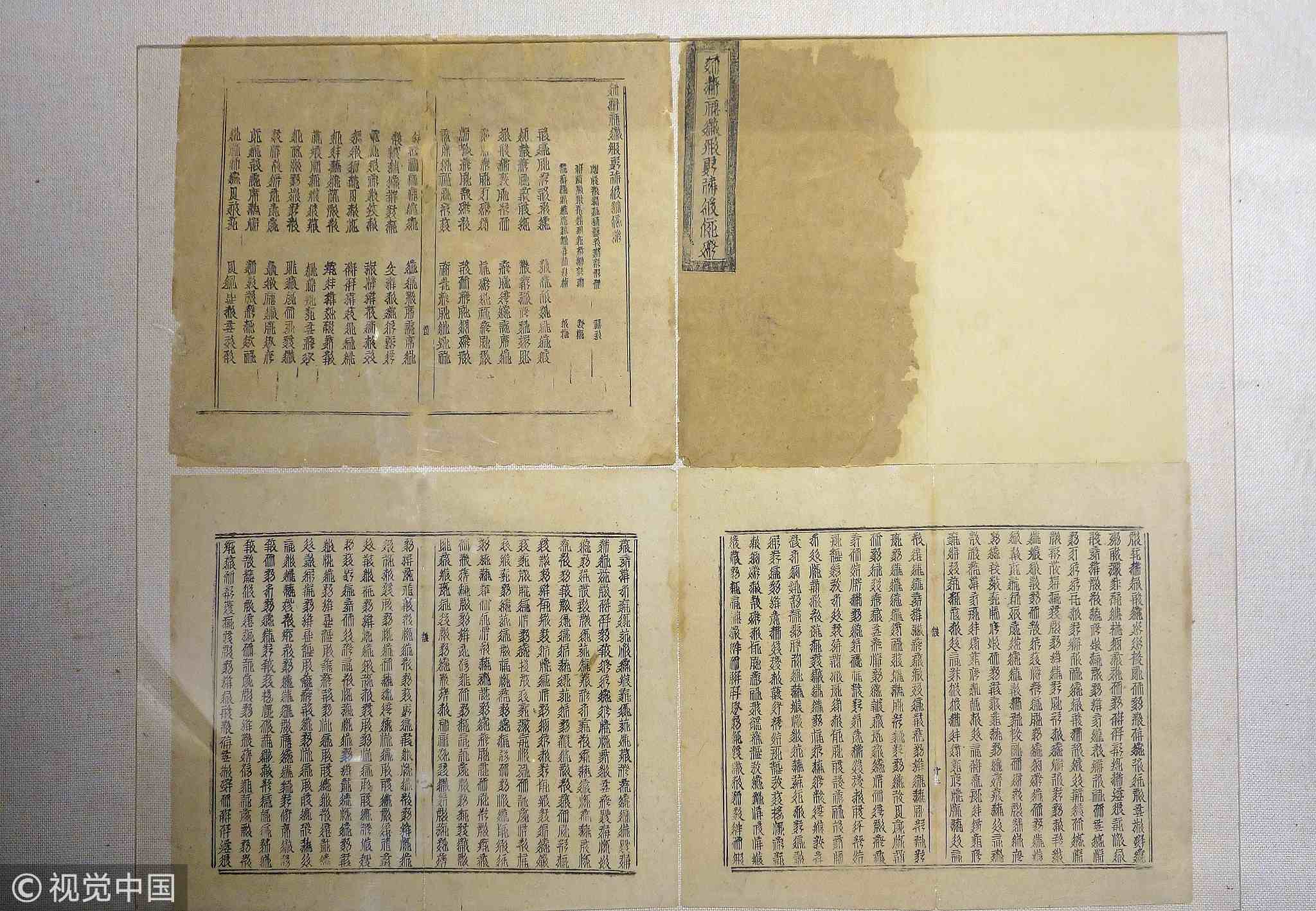
Culture
14:59, 20-Sep-2018
Ningxia and the Belt and Road
Updated
14:44, 23-Sep-2018
By Wu Yan

In 1983, a beautiful golden silver kettle was unearthed at a tomb in a suburb of Guyuan City, northwest China's Ningxia Hui Autonomous Region. Its pattern shows the Trojan War, a famous battle in Ancient Greece. Along with it, many Persian silver coins and Roman Empire's gold coins were discovered.
The tomb was later found belonging to aristocrats, Great Zhuguo General Li Xian and his wife Wu Hui of Beizhou in the Southern and Northern Dynasties (420 - 589 AD). And the precious kettle was not made in China, but an artifact from the Sassanid Empire (224 AD – 651 AD), or the Neo-Persian Empire.

A file photo taken on July 18, 2017, shows the golden silver kettle discovered at a tomb in a suburb of Guyuan City, Northwest China's Ningxia Hui Autonomous Region. /VCG Photo)
A file photo taken on July 18, 2017, shows the golden silver kettle discovered at a tomb in a suburb of Guyuan City, Northwest China's Ningxia Hui Autonomous Region. /VCG Photo)
These valuable foreign objects not only show Li's high social status, but also the flourish of the terrestrial Silk Road back then.
Since the opening of the Silk Road between 139 BC and 126 BC by Zhang Qian, an ancient China's diplomat, traveler and adventurer, people followed his steps, and the road was extended and expanded into trans-Eurasian trade routes, linking the Chinese heartland with the Eurasian hinterland, the Mediterranean countries, and the Indian subcontinent.
Ningxia, a key stop along the Silk Road, witnessed traders, diplomats, soldiers, and adventurers from different countries come and go. This is where eastern and western civilizations met, collided and fused with each other.
Just as the exchange of commercial goods enriched people's lives both in the west and east, the cultural exchange affected them in a deeper way.
In a tomb dating back to the Tang Dynasty (618 - 907 AD) that was unearthed in Ningxia's Yanchi County, there were two tomb doors curved with two male dancers.
They have deep eye sockets, high-bridged noses, curved whiskers and hair, and are dressed in a narrow-sleeve blouse, tight skirt and long leather boots. Dancing in pairs on a rounded carpet, they lift part of their bodies and raise arms, a dance move known at the time as Hu-teng or Hu-xuan.

A file photo taken on July 21, 2017, shows the Hu-xuan dance pattern on a tomb door. /VCG Photo)
A file photo taken on July 21, 2017, shows the Hu-xuan dance pattern on a tomb door. /VCG Photo)
The dance, originated in the Western Regions (what is now Xinjiang and parts of Central Asia), spread to the then capital Chang'an, which is now known as Xian. The dance was so popular in Tang Dynasty that even Emperor Xuan Zong's famous consort Yang Guifei and official An Lushan exceled in Hu-xuan dance.
Hundreds of years later in 1267 of the Yuan Dynasty (1206 - 1368 AD), Jamal ad-Din, an astronomer from the Western Regions set up an Islamic Astronomical Bureau in the capital Beijing under the emperor's order, and made seven astronomical instruments.
His contribution paved the way for Chinese astronomer Guo Shoujing to invent some more accurate astronomical instruments and made Chinese astronomy one of the most advanced in the world at that time.

A file photo taken on October 28, 2012, shows a model of simplified armilla invented by Guo Shoujing. /VCG Photo)
A file photo taken on October 28, 2012, shows a model of simplified armilla invented by Guo Shoujing. /VCG Photo)
Just as western knowledge enlightened China, Chinese inventions spread through the Silk Road and into western civilization.
This historic document shows that Bi Sheng invented clay-block movable-type printing in the Northern Song Dynasty (960 -1127 AD) and Wang Zhen invented woodblock movable-type printing in Yuan Dynasty (1271- 1368). But not a single movable-type printing book was found for a long time.
In 1991, a Tangut version of "Samputa-tantra", a Buddhist script dating back to the Western Xia (1038 -1227 AD), was found in one of the Baisikou Towers in Helan County, Yinchuan City of Ningxia. It was recognized as the earliest woodblock movable-type printing book ever found in the world.

A file photo taken on July 21, 2017, shows a Tangut version of "Samputa-tantra". /VCG Photo)
A file photo taken on July 21, 2017, shows a Tangut version of "Samputa-tantra". /VCG Photo)
The movable-type printing replaced handwriting in books, greatly enhancing the efficiency of producing books.
With the paper-making technique, another Chinese innovation introduced to the Western Regions along the Silk Road, movable-type printing also journeyed along the road.
Inspired by Chinese printing techniques, Johannes Gutenberg invented mechanical movable type printing, becoming the first European to use movable type. His invention ushered in a modern period of European history.
Today, with the implementation of the Belt and Road Initiative, namely the land-based Silk Road Economic Belt and ocean-going 21st Century Maritime Silk Road, the terrestrial Silk Road that once linked the east and the west is rejuvenated.
Ning Xia, as the pivotal point on the Silk Road, will continue playing its role by introducing Chinese culture out and bring western culture in.
(Cover: A combined photo of Tangut version of "Samputa-tantra", golden silver kettle, a model of simplified armilla invented by Guo Shoujing, and Hu-xuan dance pattern on a tomb door. /VCG Photos)

SITEMAP
Copyright © 2018 CGTN. Beijing ICP prepared NO.16065310-3
Copyright © 2018 CGTN. Beijing ICP prepared NO.16065310-3